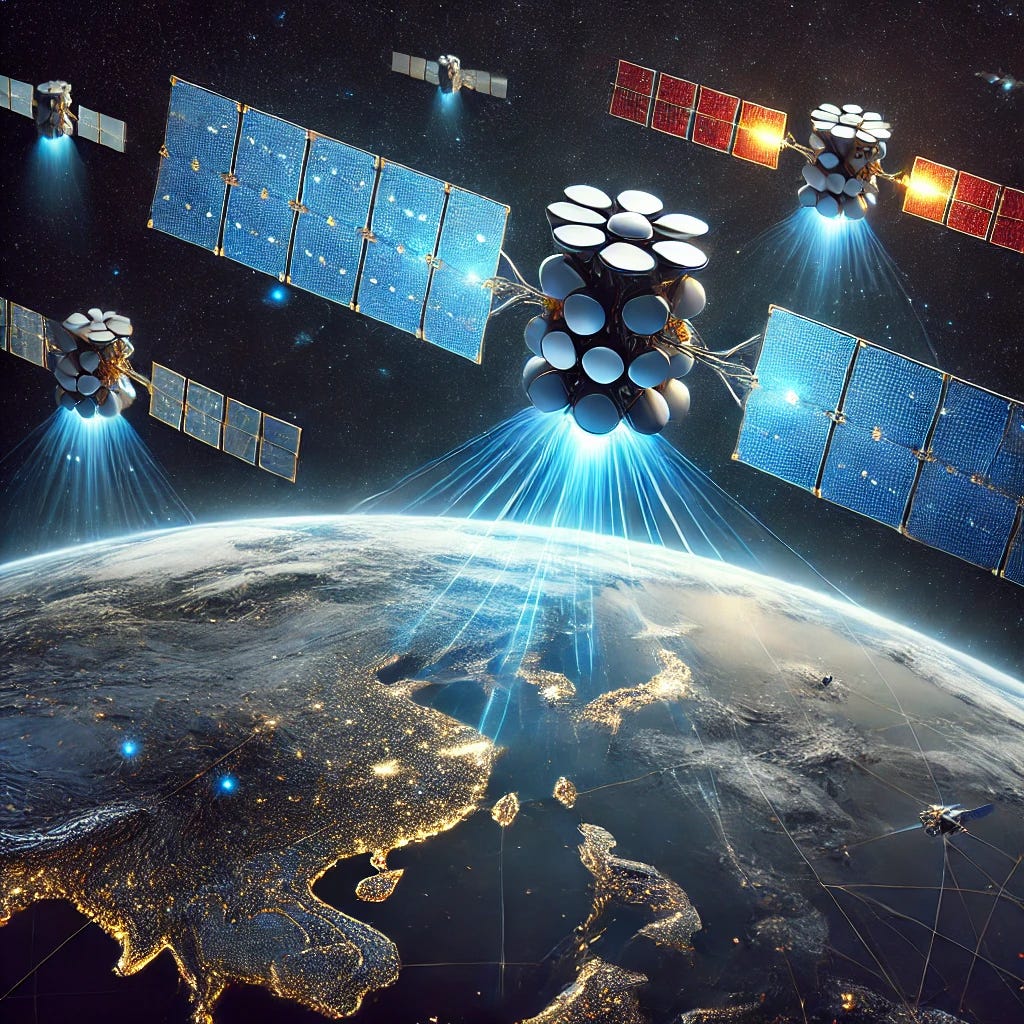QUICKLOOK: Starlink vs. China's Qianfan Constellation: The Global Battle for Satellite Supremacy
How Technological Rivalry, Internet Freedom, and Anti-Satellite Threats Shape the Future of Space-Based Communications Amid Rising Geopolitical Tensions
BLUF:
SpaceX's Starlink faces increasing competition from China's Qianfan Constellation and satellite initiatives linked to the Belt and Road Initiative (BRI). The competition represents a conflict between open Internet access and state-controlled censorship. Potential military conflicts, such as over Taiwan, combined with growing anti-satellite (ASAT) threats, add a new layer of complexity that could significantly impact both systems and shape the future of military, political, and economic landscapes.
Situation Overview:
China’s Cyberspace Administration has proposed strict real-time satellite broadband censorship laws, which challenge Starlink's operations. Meanwhile, China is developing the Qianfan Constellation, aiming to launch 15,000 satellites by 2030. This project reflects China’s broader strategy of asserting control over global satellite communications, often bundled with BRI infrastructure projects. The initiatives embody ideological differences between Starlink’s uncensored global internet access and China’s state-controlled censorship model.
Key Points:
1. China's Motivations:
Information Control: China seeks to control both domestic and international internet traffic to ensure political stability and to suppress dissenting viewpoints.
Technological Sovereignty: Through Qianfan, China aims to achieve independence in satellite communications and reduce its reliance on foreign technologies, particularly those from the West.
Domestic Industry: China is investing in state-owned enterprises to develop its satellite infrastructure, ensuring that it aligns with national security priorities and data sovereignty.
2. Starlink's Potential Escalation Strategies:
Technological Innovation:
Encryption and Anti-Jamming: Starlink’s deployment of frequency-hopping spread spectrum (FHSS) and enhanced encryption helps ensure resilience against jamming and electronic warfare. These were essential when Starlink countered Russian jamming in Ukraine, demonstrating its ability to adapt to cyber threats.
Decentralized Design: The low-Earth orbit (LEO) constellation structure allows Starlink to route communications through unaffected satellites, increasing resilience to ASAT attacks or jamming attempts.
Diplomatic Engagement:
Starlink could seek regulatory protection from NATO, the EU, and Western governments to ensure it can operate in politically contested regions like Taiwan. SpaceX’s advocacy for satellite internet neutrality could provide a strategic counter to China’s censorship models, securing international support.
Expanding in Developing Regions:
Competing with China’s BRI: Starlink’s expansion could target Africa, Southeast Asia, and Latin America, where BRI-linked satellite services are being introduced by China. Starlink offers a unique alternative by providing uncensored, high-speed internet. This could appeal to governments or populations wary of China's data control policies.
Cost Adjustments: SpaceX could lower subscription fees, especially in developing markets, to compete with China’s subsidized satellite services and broaden its customer base.
3. Geopolitical Implications:
US-China Rivalry: The competition between Starlink and Qianfan echoes the US-China geopolitical tension seen in the 5G conflict with Huawei. Satellite networks are now critical to both civilian and military infrastructure, which makes this competition even more significant.
Soft Power in Developing Regions: Starlink’s ability to offer uncensored internet access provides an alternative to China’s censorship-friendly model in developing regions. This could shift the balance of global soft power, especially in areas targeted by China’s BRI.
Economic Repercussions for SpaceX: As Starlink expands, it risks economic retaliation from China, particularly if Tesla's operations are affected. Balancing these business interests and geopolitical concerns will be critical for Elon Musk.
4. Historical Context: Starlink’s Role in Ukraine:
Starlink’s performance in Ukraine, where it countered Russian electronic warfare and maintained internet access despite intense jamming, highlights its potential utility in conflict zones. This resilience could be critical in a Taiwan conflict where maintaining communication infrastructure is vital.
5. China's Qianfan Constellation:
China’s Qianfan Constellation aims to deploy 15,000 satellites by 2030, offering global satellite internet integrated with 5G networks. The system is designed to maintain data control and impose state censorship. It will likely appeal to countries that value data sovereignty and are aligned with China’s governance model.
6. ASAT Threats:
Vulnerability of Starlink:
LEO satellites, like those in Starlink’s constellation, are vulnerable to ASAT weapons such as direct-ascent missiles. Both Russia and China have demonstrated the ability to destroy satellites using such weapons, posing a direct threat to Starlink’s infrastructure, particularly during heightened tensions.
Russia's Electronic Warfare Tactics:
Russia has deployed advanced jamming systems and GPS spoofing techniques to disrupt Starlink’s service on the frontlines in Ukraine. These tactics exploit Starlink’s reliance on GPS signals for synchronization, and while GPS jamming is not unique to Starlink, it has been used to target communication systems during military operations.
Jamming is most effective when ground-based transmitters use drones or other airborne systems to interfere with the Ku-band signal used by Starlink.
China’s ASAT Capabilities:
China has an established ASAT program, having tested ASAT weapons since 2007. China’s capabilities include co-orbital satellites and direct-ascent missiles, which could be deployed to target critical Starlink or Qianfan satellites in a Taiwan conflict. These capabilities create a substantial risk of disabling communication satellites during conflict.
Debris Creation and Risk:
The creation of space debris is a significant concern with kinetic ASAT strikes. For instance, when a Chinese Long March 6A rocket broke apart in 2024, it generated a debris field that posed a long-term threat to satellites operating in polar orbits. This debris can collide with other satellites, leading to widespread disruptions.
Conclusion:
The competition between Starlink and China’s Qianfan Constellation is intensifying in both technological and geopolitical arenas. The growing threat of ASAT weapons, particularly in the context of a Taiwan conflict, presents significant challenges to both systems. Each system must continue innovating to protect against ASAT threats while navigating the complexities of global geopolitical tensions and economic consequences. The outcome of this rivalry will shape the future of global satellite communications, military strategy, and internet governance.




